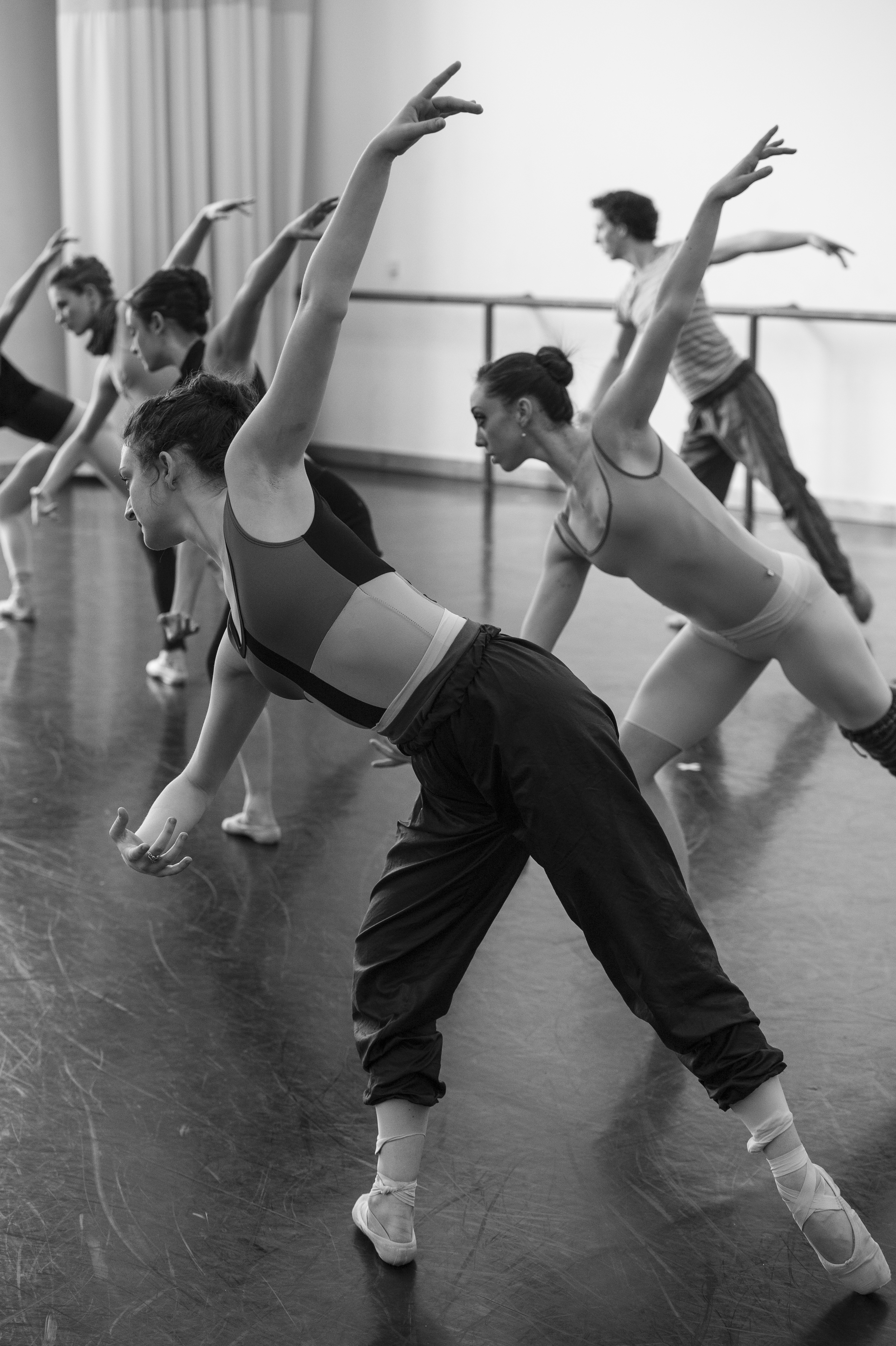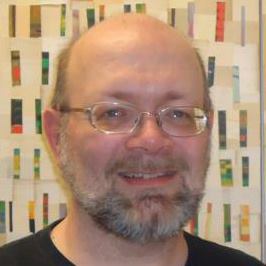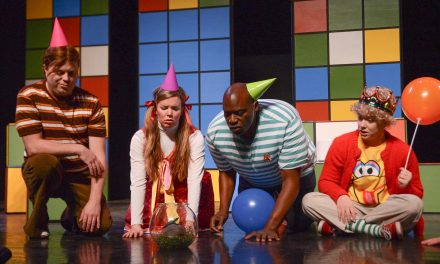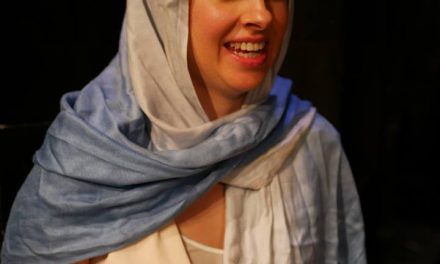Choreographer’s Showcase
Various choreographers
Review by Keith Waits
Entire contents copyright © 2015 by Keith Waits. All rights reserved
When it comes to dance, I am no expert, yet I love to watch it, and I am especially enthralled by modern dance. Twice each season Louisville Ballet offers performances in the studio space within their headquarters at 315 East Main Street; intimate and, at their best, revelatory explorations of movement in relationship to an audience.
I would count this “spring” showcase (Main Street was a snowy mess) as one of the strongest of these programs that I have attended. It opens forcefully with Sea Change, choreographed by Sanjay Saverimuttu, a fast and fluid examination of gender confusion in which the ten male and female dancers were clad in nearly identical, androgynous attire, and moved in uniform gesture and pattern that countered the standard breakdown of masculinity and femininity in dance.
Ryan Stokes’ Behind Open Doors played almost as an extension of the tone and energy of the opening piece, with the theme of metamorphosis nicely echoing the questions of identity already in the air. The scenario is a whirlwind of changing dance moves surrounding one solitary figure who is perhaps dreaming of reinventing himself, seeking the courage to step through the doorway that is the dance’s only set piece.
Closing the first act was Benjamin Wetzel’s The Flying Dutchman, a stunning merging of modern dance with a classic story, filled with movement alternately uniform and individual, alluding in one moment to the structure of a sailing vessel and the actions of a its crew, and then expressing the power and volatility of the sea in the next.
During intermission there was a projected video in the lobby that was part of the evening’s program. Seven-Nine-One is a stop-motion animation by Shelby Shenkman. The Louisville Ballet company trainee catalogs a series of positions, focusing on one dancer’s feet. It was slight, but representative of a broader, more inclusive taste for experimentation in form and presentation that reflects the sensibility of freshman Artistic Director Robert Curran.
Once the audience returned to the performance space, Threads of Human Cloth, by Elizabeth Smith, exemplified what is so exciting about contemporary forms of dance. A specific setting of a subway station allows for a microcosmic survey of psychological neurosis. The expressive, unorthodox choreography charts a powerful, enigmatic narrative, but it also is bold in small touches, such as when a dancer is turned in mid-air by another dancer grabbing her by the foot while she pivots on a third dancer’s shoulder. In such an instant the storytelling demands are subservient to a giddy instance in which a body becomes purely an object moving through space. Like most of the work this evening, it was truly an ensemble piece, yet I would be remiss if I didn’t mention Leigh Anne Albrechta’s complex characterization of a highly distressed denizen of the underground tunnels.
A multi-disciplinary approach combines Shakespeare, Bluegrass and dance in Sonnets in Blue, choreographed by Roger Creel. Kentucky Shakespeare company member Tony Milder recites portions of four sonnets, establishing tone and context for dynamic movement between five men and one woman. There are echoes of Appalachian folk tales in the piece, and Mr. Milder’s forceful delivery is brought into the center of the action just enough to make you wish for more meaningful interaction between actor and dancers. At least he is not relegated to the sidelines, but I still found this to be an uneasy mix of forms.
The final piece, Daniel Riley’s Sacred Shifts, was perhaps the most thrilling dance of the evening, a ritualistic pattern of movement that was primordial in its tone, yet with music that conjured associations of horror and science fiction, it seemed entirely contemporary as well. Helen Daigle’s turn as the focal point of the action was raw and frightening in its impact, as if the scenario was post-apocalyptic in its context. Creative lighting effects and a creative use of (talcum) powder powerfully reinforced the complex recipe of ideas at play in Mr. Riley’s work.
Modern dance may often strike people as abstract, but one of the things I enjoyed most about this evening was how much storytelling there was. Even within the spare staging afforded by the studio space, these choreographers were telling tales. Mr. Milder’s presence: an actor with a capital “A”, was an important cue that this night brought renewed emphasis to the dancer’s job to create and embody character in the service of a story.
Choreographer’s Showcase
March 4 – 7, 2015
Louisville Ballet Studios
315 East Main Street
Louisville, Kentucky 40202
502- 583-2623
Louisvilleballet.org
[box_light]Keith Waits is a native of Louisville who works at the Louisville Visual Art Association during the days, including being one of the hosts of PUBLIC on ARTxFM, but spends most of his evenings indulging his taste for theatre, music and visual arts. His work has appeared in Pure Uncut Candy, TheatreLouisville, and Louisville Mojo. He is now Managing Editor for Arts-Louisville.com.[/box_light]





